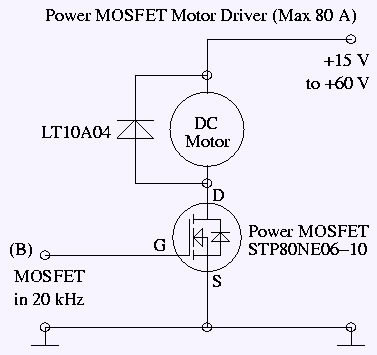Only MOSFETs are used in motor controllers.
MOSFETs do not have exclusives on motor controllers, bjts, igbts and in some cases unusual scr and triac, are also used. the choice depends on the specific application. voltage, current switching speed are the top three parameters that drive selection. although there is a mosfet with low resistance, there is trade off in big cgs.when a very high voltage requires then igbt may be the only option.
MOSFETs do have advantages in most applications. Discrete MOSFETs have the advantage of a built-in switching diode that provides longer protection in / dt and reverse bias damage. this is not in monolithic versions and external diodes may be required.
Once again, the specific application will determine the best device to use. there are many design parameters that need to be considered than those mentioned above. there is a trade off for consideration-should I choose a cheap one which will lead to a more complicated driver circuit..etc.
No FET / BJT or other transistors.
MOSFET resistance is low. if you pass through 20a current through the mosfet and if the resistance is 10, then the power dissipated by the mosfet is (20 * 20 * 10) / 1000 = 4w. so a simple heat sink is enough. if you use fet / bjt then you may have to use a very large heat sink, also, the power dissipation will be higher. the more power dissipation, the life of the device will be low.
Because MOSFET is stronger, and cheaper. bjt has both damage and hot spot problems inside silicon, which is not in fets, jfets or mosfet.
Igbt is also used, but they are more complicated to drive, limited to switchers, only adapted for high energy transfer, they use a combination of bipolar thyristor and transistor technology, for more than 10s of kw power management.
The motor always has a large current / voltage ratio, because the blocked rotor can drag too much current at any time, and bipolar is not very friendly to high currents due to saturation voltage, otherwise mos can have very low RDS (at resistance), reach as low as 0.001 ohm, so your voltage at 100 amp can be ignored, as well as total power dissipation. sometimes the cable and contact surface / weld do more heat than mos device.
High current mos devices also got cheap because of the massive switcher used for the processor (on the motherboard) that use it; Pentium 100w single works at as low as 1volt, so they need 100 amp at this voltage, and mos is not able to lose energy, they & get 95% efficient to convert 12vdc into 1vdc, at rms average current of 100amp and more at peak. they are also small, and as told, mass-produced, mos with 50-100 amp capability is very common there.
You can have some advantages by using MOSFETs as drives / motor controllers instead of bipolar transistors. but by no means only used MOSFET in that function.
So, to conclude, bipolar transistors are very often used in motor controllers. and bipolar transistors in saturation (collector-emitter voltages lower than 0.5 v usually) do not consume more power than MOSFETs when riding small or medium size motors.


